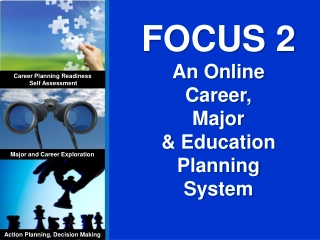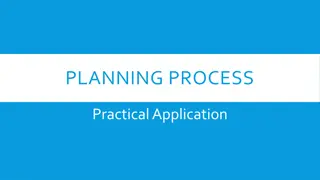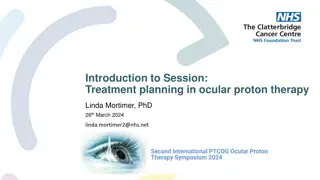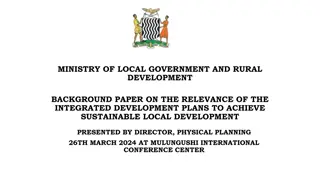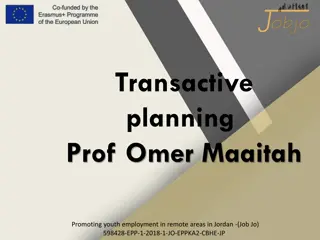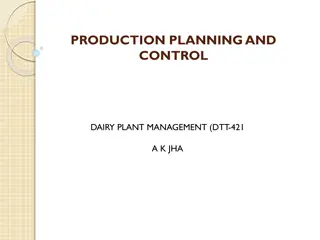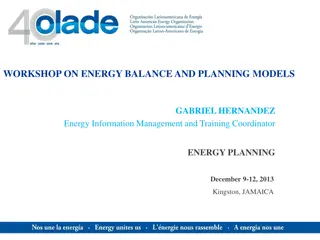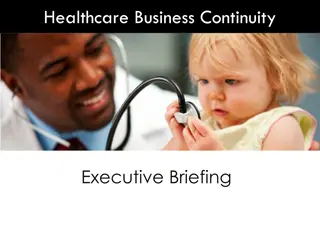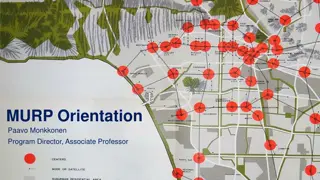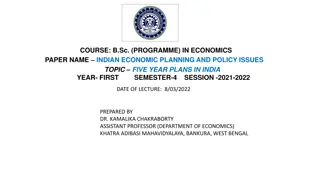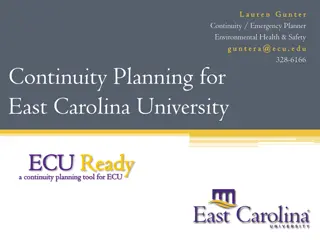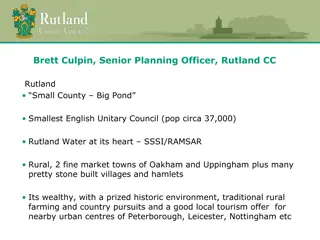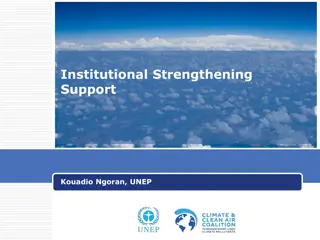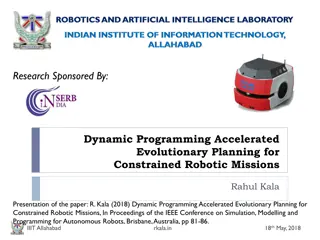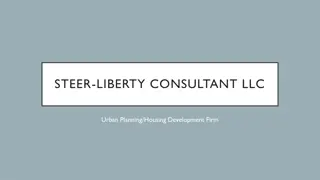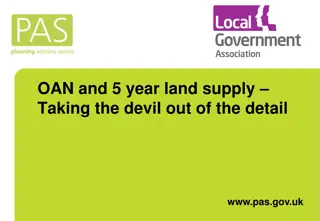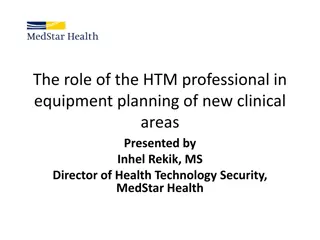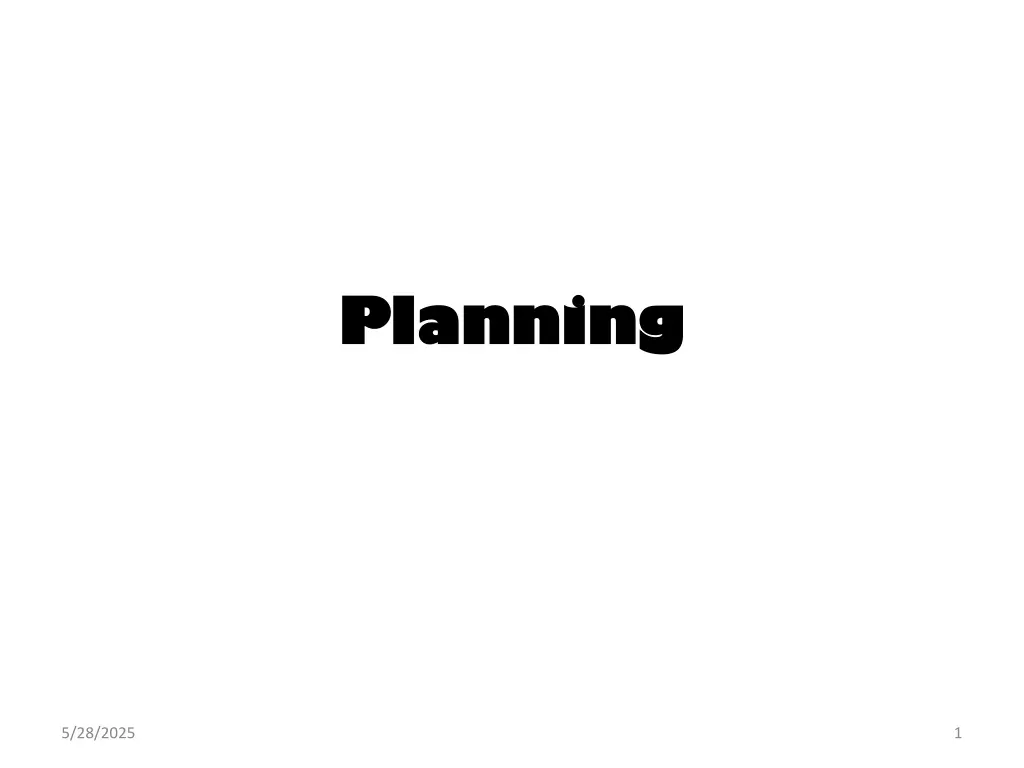
Effective Planning Strategies for Achieving Organizational Goals
Explore the importance of planning and its role in decision-making within organizations. Understand the key features, types, and steps of planning to set specific objectives and reduce ambiguity. Discover the dynamic nature of planning and its role in providing direction, reducing uncertainty, and establishing goals for effective control and efficiency.
Download Presentation

Please find below an Image/Link to download the presentation.
The content on the website is provided AS IS for your information and personal use only. It may not be sold, licensed, or shared on other websites without obtaining consent from the author. If you encounter any issues during the download, it is possible that the publisher has removed the file from their server.
You are allowed to download the files provided on this website for personal or commercial use, subject to the condition that they are used lawfully. All files are the property of their respective owners.
The content on the website is provided AS IS for your information and personal use only. It may not be sold, licensed, or shared on other websites without obtaining consent from the author.
E N D
Presentation Transcript
Planning Planning 5/28/2025 1
Outline Definition Features of planning Types of planning Steps of planning 5/28/2025 2
Session objectives At the end of this session, you will be able to: Define planning Define health planning Describe features of planning Discuss types of planning Explain steps of planning 5/28/2025 3
Brainstorming What is planning? Why is planning important? What types of planning do you know? 5/28/2025 4
Health Planning Health Planning Planning is the combination of compiling and analyzing information, dreaming up ideas, using logic and imagination and judgment in order to arrive at a decision about what should be done. Planning is deciding in advance what is to be done It is projected course of action for the future Planning is not simply a technical exercise; but it is an ongoing process of learning, adapting to change, and educating 5/28/2025 5
Cont It s concerned with both ends (what) and means (how) Specific objectives covering a specific time period are defined These objectives are written and shared with organizational members to reduce ambiguity and create a common understanding about what needs to be done 5/28/2025 6
Cont A true plan should not be a static document A plan is not a plan if it is not dynamic, evolving with the changing environment. A plan does not provide the ultimate solution but offers the mechanism for finding the solution. It should embody the principles necessary for achieving the goals of the community or the organization. 5/28/2025 7
Cont Rationale of planning It provides direction to managers and non- managers It reduces uncertainty by forcing managers to look ahead, anticipate change, consider the impact of change, and develop appropriate responses Minimizes waste and redundancy 5/28/2025 8
Cont Establishes the goals or standards used in controlling Without planning, there would be no goals against which to measure work effort 5/28/2025 9
Cont Health Planning- is the process of defining community health problems, identifying needs and resources, establishing priority goals, and setting out the administrative action needed to reach those goals Planning assumes future will be different from present It is a device for change 5/28/2025 10
Cont Features of planning: oClear vision, mission, goal and objectives oA clear picture of the tasks to be accomplished oThe resources needed to accomplish the task (human, material, financial, time ) oTakes place at any level in health system & continually oNeeds participation of d/t government sectors, community, NGOs . 5/28/2025 11
Cont Vision: is a picture of desired future of a country, an organization, an individual . oEnables people to play an active role in creating the future oDescribes where the group or the organization wants to be in the future oIs a visual image you can see in your mind E.g. We see healthy children walking to school on safe roads 5/28/2025 12
Cont Mission: is a statement which describes why the organization exists. oMentions the target population it serves oDescribes the services offered oScope of the organization s activities E.g. Debre Birhan Hospital strives to provide preventive, promotive, curative, & rehabilitative health services to the people of Debre Birhan town and its surroundings so that the people lead a healthy and prosperous life. 5/28/2025 13
Cont Types of planning Based on scope and time of the plan, it is of two types: 1. Strategic/allocative planning o Is the process of determining what an organization intends to be in the future and how it will get there o It takes five years or more 5/28/2025 14
Cont o Is comprehensive in scope, reflect long term needs & directions of the organization. o Is a top management plan and focuses on overall organizational goal 5/28/2025 15
Cont 2. Operational/tactical/activity planning o Are plans used to implement strategic plans o Short range planning that emphasizes on current operations of various parts of the organization o Are more limited in scope & address those activities and resources required 5/28/2025 16
Cont o Deal more with the implementation & scheduling of actual work activities o Contains substantial amount of details 5/28/2025 17
Strategic vs. operational plans Strategic vs. operational plans Areas of differences Strategic plan Tactical plan Individuals involved Top level manager middle/front-line Facts to be based Facts are generally - facts are generally- on difficult to gather easy to gather Amount of details relatively little detail Substantial detail Time covered long period (> Short period (< 5yrs) 1yr) 5/28/2025 18
Cont Steps of planning In the planning process, there are the following steps 1. Plan the planning 2. Review of policy guidelines 3. Situational analysis 4. Problem analysis & prioritization 5. Setting objectives and targets 6. Formulate interventions 7. Determine resource requirements 8. Preparing budget 9. Prepare action plan 10. Monitoring & evaluation 11. Writing the plan 5/28/2025 19
Cont 1. Plan the planning oThis stage deals with prerequisites that have to be in place and issues that have to be resolved before actual planning exercise may start oThe objective is to ensure that planning process can be carried out smoothly oEstablish the identity and position of the planning body, i.e. the team 5/28/2025 20
Cont Determine specific terms of reference of the plan: owhat has to be planned?, the purpose of planning odefining target group, for what time period oidentify resources available, timings, tasks and responsibilities oassign responsibility to each member (chairman, secretary, core members, community representatives, from other government department, NGOs) 5/28/2025 21
Cont 2. Review of policy guidelines It is the process of familiarization with government directives and conditions that must be followed in preparation of the health plans To ensure the health plan is in line with government national health policy 5/28/2025 22
Cont 3. Situational analysis and problem identification o It is the stage of planning which implies understanding of current situation o It provides a common reference point for the rest of the planning process o It allows the selection of priority areas of concern for planning o Answers the question where are we now? o The current situation is described with identification of health and health related needs and available resources 5/28/2025 23
Cont Issues such as: oPopulation characteristics oArea characteristics & infrastructure oPolicy and political environment oHealth needs oOrganizational structure and functions of health services oResources (personnel, financial, material .) oPast implementation experience should be analyzed well 5/28/2025 24
Cont What are possible sources of data for situational analysis & problem identification? 5/28/2025 25
Cont 4. Problem analysis and prioritization Problem is a gap between current situation and desired future Problem analysis is the art of critical examination of problems against prevailing conditions of your organization The analysis is done by constructing a problem tree A problem tree is a set of assumptions on causes associated with the problem and its consequences 5/28/2025 27
Cont When analyzing problems, we should define clearly what the problem is, find all possible causes of the problem, & not confuse problems with causes Root causes of a given problem should be analyzed well using methods such as 5 whys, fishbone analysis .. Objectives, targets, and strategies should focus on root causes of the problem 5/28/2025 28
Cont E.g. Problem- high prevalence of diarrheal disease Possible causes: Inadequate and unsafe water supply, poor sanitary conditions, inappropriate weaning practice 5/28/2025 29
Cont Grouping of problems A. Environmental problems Poor sanitary conditions Poor housing conditions Inadequate and unsafe water supply Air pollution and so on 5/28/2025 30
Cont B. Diseases/health problems o Malaria, tuberculosis, HIV/AIDS, malnutrition, respiratory diseases, etc C. Socio-economic problems Low per capital income Low literacy rate Inequitable distribution of health services Cultural and religious beliefs and values 5/28/2025 31
Cont D. Health services problems o Poor quality and quantity of drugs o Old medical equipments o Lack of qualified personnel o Difficulty in visiting out-reach areas Grouping helps seek common solutions to groups of problems 5/28/2025 32
Cont Problems are prioritized in the light of competing needs and limited resources. Setting priority is, perhaps the most critical and hardest planning stage and yet cannot be avoided. 5/28/2025 33
Cont Criteria for problem prioritization o Magnitude of the problem: the public health burden imposed by the problem o Degree of severity: consequent suffering, death and disability o Feasibility: possibility of tackling the problem with available intervention 5/28/2025 34
Cont o Community concern: how much does it relate to community perceived health needs? o Political expediency: if the problem is not recognized as politically expedient by the central authority, it is very difficult to include it among the high priority list oThe problem should be politically acceptable to convince local politicians 5/28/2025 35
Cont o Based on the above criteria ranking is then done by using on 5 point scale very high (5), high (4), moderate (3), low (2) and very low (1) 5/28/2025 36
Cont 5. Setting objectives and targets Goals, aims, objectives and targets are all ways of describing the desired direction of a service. They differ in terms of breadth and detail Goals:- Are broad statements. There is generally one goal for a service. oE.g. ' Health for all by 2000 and beyond. 5/28/2025 37
Cont Aims:- There are a number of aims relating to the goal. They are specific to particular health problems. oE.g. 'To raise the nutritional status of women and children. Objective:- For each programme aim, there may be a number of objectives which are specified in measurable terms. 5/28/2025 38
Cont An objective should be SMART i.e. specific, measurable, attainable, realistic, time bounded Specific o An objective must be specific with a single key result. o If more than one result is to be accomplished, more than one objective should be written. o Just knowing what is to be accomplished is a big step toward achieving it. o Once you clarify what you want to achieve, your attention will be focused on the objective that you deliberately set. 5/28/2025 39
Cont Measurable o Allows monitoring & evaluation o Only an objective that affects behavior in a measurable way can be optimally effective. o If possible, state the objective as a quantity. o Avoid statements of objectives in generalities. o Avoid infinitive verbs such as to know, to understand, to enjoy, and to believe. 5/28/2025 40
Cont o Action verbs are observable and better communicate the intent of what is to be attempted. o E.g. To identify, to contrast, to select, to conduct, to compare, to investigate, and to develop. Attainable oAn objective must be attainable with the resources that are available. oWhat barriers stand between you and your objective? oHow will each barrier be overcome and with what resource? 5/28/2025 41
Cont Realistic o The objective should be central to the goals of the organization. o The successful completion of the objective should make a difference. o How will this objective help the organization move ahead? o Is the objective aligned with the mission of the organization? 5/28/2025 42
Cont Time bound o The objective should be traceable in time period. o Specific objectives enable time priorities to be set and time to be used on objectives that really matter. o Are the time lines you have established realistic? o Will other competing demands cause delay? 5/28/2025 43
Cont Will you be able to overcome those demands to accomplish the objective you've set in the time frame you've established? 5/28/2025 44
Cont Targets:- For each objective, there may be various targets which specify various points on the way to the attainment of the objective. A targetestablishes a measured amount of output to be achieved in relation to a health objective through a specific program activity. o Whereas objectives are set with respect to needs in the client population, targets are set with respect to service providers. 5/28/2025 45
Cont Example Objective: By the end of 2012 E.C, 90% of antenatal clients shall be tested for syphilis in Arsi Negele town. Targets o Number of lab technologists to be trained o Number of reagent to be available o Number of health education sessions to be provided for ANC clients . 5/28/2025 46
Cont 6. Formulating interventions Is a process of identifying, short-listing and deciding between alternative approaches and measures to address identified and prioritized health problems and needs. how will we get there? Steps Identifying and short-listing gaps and weaknesses in existing service components 5/28/2025 47
Cont Identifying additional components and activities that are required to bring about the desired changes in the existing service components. Identifying potential constraints and limitations to planned interventions. Modifying proposed interventions in line with geographical, political, climatic and socio cultural conditions, including existing infrastructure, management and organization 5/28/2025 48
Cont Addressing constraints by using community resources, modifying job responsibilities and tasks, shifting available resources from one activity to another and obtaining additional resources; Improving management and administration in line with identified interventions. 5/28/2025 49
Cont 7. Determining Resource Requirements Involves translation of interventions and all activities required into resources such as human labor, materials, money, space, time and information. Specify existing resources, additional resources required and total resources needed. To do this, list all programme activities, and the type and quantities of resources required by each programme activity. 5/28/2025 50
Cont 8. Budget preparation o Preparing a budget implies conversion of inputs, activities, targets and support services into money. o The budget is made up of recurrent (ongoing/routine) and developmental (capital - fixed asset) costs within a period of time. 5/28/2025 51

